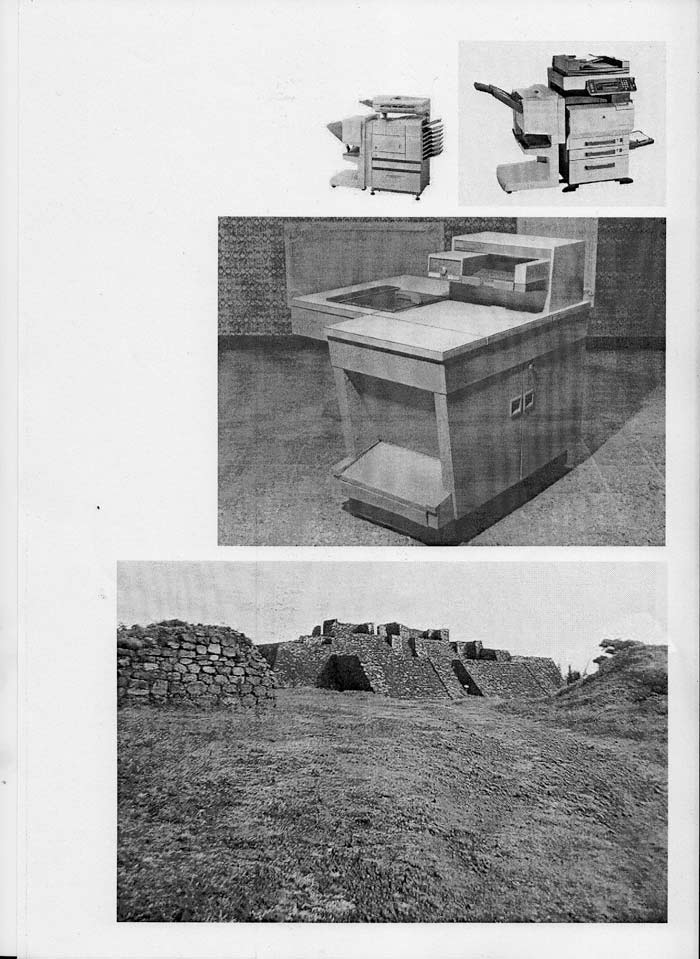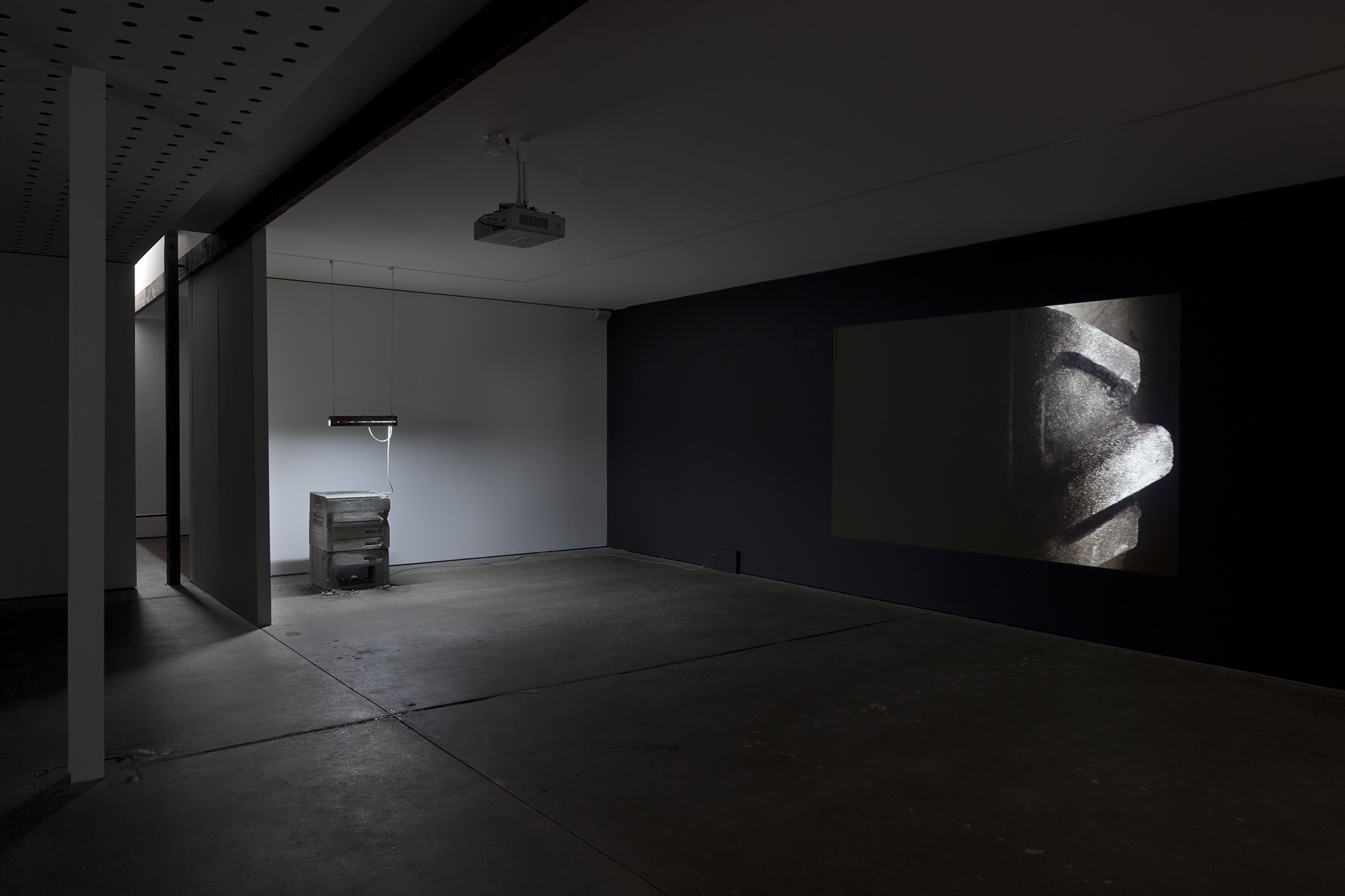Some Kinds of Duration
(2011)


An interest in the Walter Burley Griffin Pyrmont incinerator Sydney Australia began with an image from the Powerhouse museum archives of the building in a state of severe decay. Although I knew the building was situated in inner Sydney on the once industrial waterfront it appeared displaced, out of context and somehow out of time.
The building sat decaying exposed to the elements for 20 years and there was much conjecture as to its future and possible restoration after witch decay had set in on the building. Community outcry and protest waved the flag for cultural heritage but this was squandered by the wheels of progress and the building was Flattened to make way for a redevelopment project For water front apartments. Only hours before the building was demolished staff from the powerhouse museum were able to pry some of the ornamental elements from the buildings façades.
I began to think about a project concerned with the history of this building departing from this one particular image. I photocopied the image and pinned it to the wall of my studio. There was something very Romantized/picturesque about the image in the way the building was framed, it also spoke to me about lament — about the attempt to capture the passing of a moment. The photocopied reproduction of this particular image of the building seems to augment this with its dull blacks and bad toner quality, which erode the clarity of the image. By reproducing the image it was it’s self entering into a cycle of decay. It became clear The bases of the project would be centered around the themes destruction and reproduction.

Some Kinds of Duration, 2011. Installation View, CCP - Centre for Contemporary Photography, Melbourne Australia, 2012. HD video colour, silent, concrete, fluorescent light, steel, carbon.

Some Kinds of Duration, 2011. Installation View, CCP - Centre for Contemporary Photography, Melbourne Australia, 2012. HD video colour, silent, concrete, fluorescent light, steel, carbon.
Trawling the green files of the powerhouse museums archives I came across photocopied architectural heritage consultant plans as well as formal letters discussing plans to save the decorative elements on the incinerator before is imminent destruction. My original idea was to tell the story of the demolition of the Pyrmont incinerator though the photocopied achieve material and through the function of a photocopier itself; drawing a connection through carbon — the incinerator reducing matter to carbon and a photocopier using carbon to reproduce.
Having previously worked for Frank Lloyd Wright, Griffin’s architectural style was late art deco c1930’s. The Art deco movement coincided with the renewed 20th century archaeological discoveries in Egypt and the America’s. The ornamental relief of the Pyrmont incinerator was in fact was heavily inspired by pre Columbian architecture of Meso America. Architectural historians have tied Griffin’s references to the “Mayan Palace of the Governor ” of Uxmal in Yucatan, Mexico. Griffin had in fact traveled to the Yucatan on a field trip. In its last days before being demolished the Pyrmont incinerator’s resemblance to a Mayan ruin is uncanny. Overgrown in tundra shrubs and trees, crumbling and covered in it’s own sacrificial soot and ash.

Some kinds of Duration, 2011. HD Video, colour, silent, 6:48 minutes.

Some kinds of Duration, 2011. HD Video, colour, silent, 6:48 minutes.

Some kinds of Duration, 2011. HD Video, colour, silent, 6:48 minutes.

Some kinds of Duration, 2011. HD Video, colour, silent, 6:48 minutes.

Some kinds of Duration, 2011. HD Video, black and white, sound, 5:05 minutes.

Some kinds of Duration, 2011. HD Video, black and white, sound, 5:05 minutes.

Some kinds of Duration, 2011. HD Video, black and white, sound, 5:05 minutes.

Some kinds of Duration, 2011. HD Video, black and white, sound, 5:05 minutes.

Some kinds of Duration, 2011. HD Video, black and white, sound, 5:05 minutes.

Some kinds of Duration, 2011. HD Video, black and white, sound, 5:05 minutes.

Some kinds of Duration, 2011. HD Video, black and white, sound, 5:05 minutes.

Some Kinds of Duration, 2011. Installation View, CCP - Centre for Contemporary Photography, Melbourne Australia, 2012. HD video colour, silent, concrete, fluorescent light, steel, carbon.

Some Kinds of Duration, 2011. Installation View, CCP - Centre for Contemporary Photography, Melbourne Australia, 2012. HD video colour, silent, concrete, fluorescent light, steel, carbon.

Some Kinds of Duration, 2011. Installation View, CCP - Centre for Contemporary Photography, Melbourne Australia, 2012. HD video colour, silent, concrete, fluorescent light, steel, carbon.
Details to be entered...